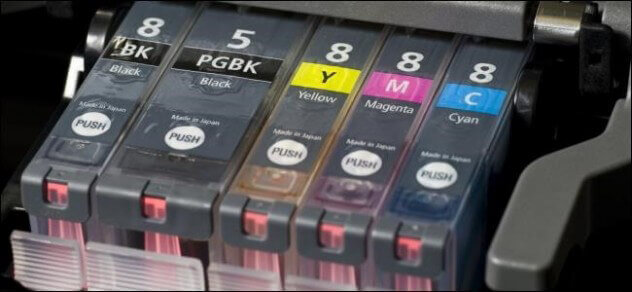Study suggests significant growth in the Inkjet market by 2017
CMYK Printer Ink from Marcelopedra.com
BCC Research has announced its estimated value of the industrial inkjet market for the year 2017, and it’s a hefty one: $7.4 billion, up from approximately $1.5 billion in 2011. That’s quite an increase, and the report goes into some detail on why this is so and what happened to cause such an increase in the expected value of the industry.
Ink cartridges (and associated fluids used in printers) have been indicated as the primary source of sales and income throughout the industry, with the projection suggesting an increase to nearly three-quarters of the entire industry by 2017. Hardware makes up the remainder of sales, focused mainly on print heads and the actual printers themselves. Many people are surprised at the things that inkjet technology has to offer, and it’s the additional services that seem to be fueling the growth of the industry.
Most people, with fairly good reason, think of the average desktop or large office printer when they think of printing anything at all. You send the documents from your computer, and pages come out a few minutes later for you to review. A few other people might consider some of the other major printing technologies, though, such as books and newspapers. Each of these requires a significantly different approach from a home printer, but in the end, printing is primarily all that’s involved.
However, inkjet has also come up with a variety of other applications that businesses are starting to make use of, and this process is expected to accelerate as more is understood about the technology and people begin to use it creatively. In the news recently was a discussion about the plans for firearms that had been posted online; in particular, the fact that the plans were for 3-D printing and could, in effect, be made by just about anyone with access to the right printing machinery. The plans were taken down by government order, but 3-D printing offers a host of applications in addition to what’s already been in the news.
At the same time, electronics and medicine have been increasingly important to inkjet as a whole, with the idea of printing many different things as a way of getting more complicated (and useful) items out of the whole process.
Of course, with the growth of the industry (and a compounded annual growth rate of 30.8%, the report suggests) comes a variety of risks and opportunities. Most businesses that are simply on the consumer end of things are unlikely to see their operations be significantly impacted. Printers will still be bought, papers will still be printed, and business will go on as usual. However, more intrepid printing businesses may rise up and either thrive or fail as a result of changes to the market and personal ability. It’s easy to be stuck in the past when you’re dealing with technology that’s become such a regular part of everyday life, but it’s only with an eye to the future that businesses can truly stay ahead of everyone else.Subscribe to our newsletter now and get special discounts!

